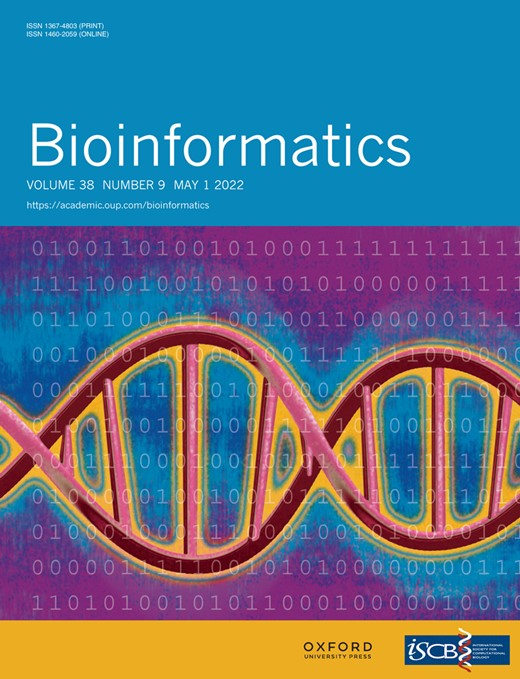- EN - English
- CN - 中文
A Cartographic Tool to Predict Disease Risk-associated Pseudo-Dynamic Networks from Tissue-specific Gene Expression
从组织特异性基因表达中预测疾病风险相关伪动态网络的制图工具
发布: 2023年01月05日第13卷第1期 DOI: 10.21769/BioProtoc.4583 浏览次数: 1274
评审: Prashanth N SuravajhalaAmei AmeiJayaraman Valadi
Abstract
Understanding how genes are differentially expressed across tissues is key to reveal the etiology of human diseases. Genes are never expressed in isolation, but rather co-expressed in a community; thus, they co-act through intricate but well-orchestrated networks. However, existing approaches cannot coalesce the full properties of gene–gene communication and interactions into networks. In particular, the unavailability of dynamic gene expression data might impair the application of existing network models to unleash the complexity of human diseases. To address this limitation, we developed a statistical pipeline named DRDNetPro to visualize and trace how genes dynamically interact with each other across diverse tissues, to ascertain health risk from static expression data. This protocol contains detailed tutorials designed to learn a series of networks, with the illustration example from the Genotype-Tissue Expression (GTEx) project. The proposed toolbox relies on the method developed in our published paper (Chen et al., 2022), coding all genes into bidirectional, signed, weighted, and feedback looped networks, which will provide profound genomic information enabling medical doctors to design precise medicine.
Graphical abstract

Flowchart illustrating the use of DRDNetPro. The left panel contains the summarized pipeline of DRDNetPro and the right panel contains one pseudo-illustrative example. See the Equipment and Procedure sections for detailed explanations.
Background
Differential expression of genes across different tissues has been thought to play an important role in shaping human diseases (Oliva et al., 2020). An increasing body of studies has begun to characterize how genes are co-expressed in tissues, to rewire transcriptional regulatory networks as key molecular mechanisms underlying human disease (Saha et al., 2017; Malatras et al., 2020; Consortium, 2020). However, existing approaches for reconstructing gene regulatory networks are limited in capturing the full properties of gene–gene interactions, which are essential for a mechanistic understanding of disease etiology. For example, correlation-based approaches can only estimate the strength of gene–gene interactions, failing to identify the causality of the interactions, whereas Bayesian networks can identify the causality, but cannot characterize the sign of the interactions and feedback cycles. All these properties can be recovered using dynamic modeling of gene expression. However, it is impossible and ethically impermissible to collect temporal transcriptional data from human tissues. We have developed a series of quasi-dynamic models that can identify the aforementioned properties in gene–gene interactions from static data (Chen et al., 2019; Griffin et al., 2020; Wu and Jiang 2021; Chen et al., 2021). More recently, we leveraged these models to recover tissue-specific and pseudo-dynamic gene regulatory networks across the spectrum of disease risk (Chen et al., 2022). In this article, we develop a software pipeline called D isease R isk-associated pseudo-D ynamic Networks Bio-Pro tocol (DRDNetPro). This pipeline provides a detailed tutorial, enabling researchers to reconstruct pseudo-dynamic networks from static gene expression data, which helps to identify context-specific and personalized networks, and further the mechanistic understanding of diseases. The software and detailed tutorials with illustrative data examples can be found in our GitHub repository (https://chencxxy28.github.io/DRDNetPro/articles/NAME-OF-VIGNETTE.html).
Equipment
Computational requirements
The users need to prepare a desktop/laptop computer with R version 4.1.0 or above installed.
Install packages (The summary of the tutorial in the GitHub page repository)
Run the function “install.packages()” to install the required packages, including “pROC”, “np”, “splines2”, “grpreg”, “Matrix”, “igraph”, “ggplot2”, and the optional packages “ranger”, “XGBoost”, and “dplyr”.
Run the function “devtools::install_github()” to install the package “DRDNetPro”. Run the function “install.packages()” to install the package “devtools”, if it has not been installed yet.
Software
Software list
DRDNetPro (Chixiang Chen, https://github.com/chencxxy28/DRDNetPro)
graph (The igraph core team, https://igraph.org/r/)
ggplot2 (Hadley Wickhan, https://ggplot2.tidyverse.org/)
Datasets for demonstration
The demo data for method illustration can be downloaded from the website https://chencxxy28.github.io/DRDNetPro/articles/web/data.html, which is from the GTEx project originally. Gene expression data were collected from blood vessels and de-identified subsamples of phenotype information from donors.
Procedure
文章信息
版权信息
© 2023 The Authors; exclusive licensee Bio-protocol LLC.
如何引用
Chen, C., Shen, B., Zhang, L., Yu, T., Wang, M. and Wu, R. (2023). A Cartographic Tool to Predict Disease Risk-associated Pseudo-Dynamic Networks from Tissue-specific Gene Expression. Bio-protocol 13(1): e4583. DOI: 10.21769/BioProtoc.4583.
分类
系统生物学 > 连接组学
药物发现
生物信息学与计算生物学
您对这篇实验方法有问题吗?
在此处发布您的问题,我们将邀请本文作者来回答。同时,我们会将您的问题发布到Bio-protocol Exchange,以便寻求社区成员的帮助。
Share
Bluesky
X
Copy link










